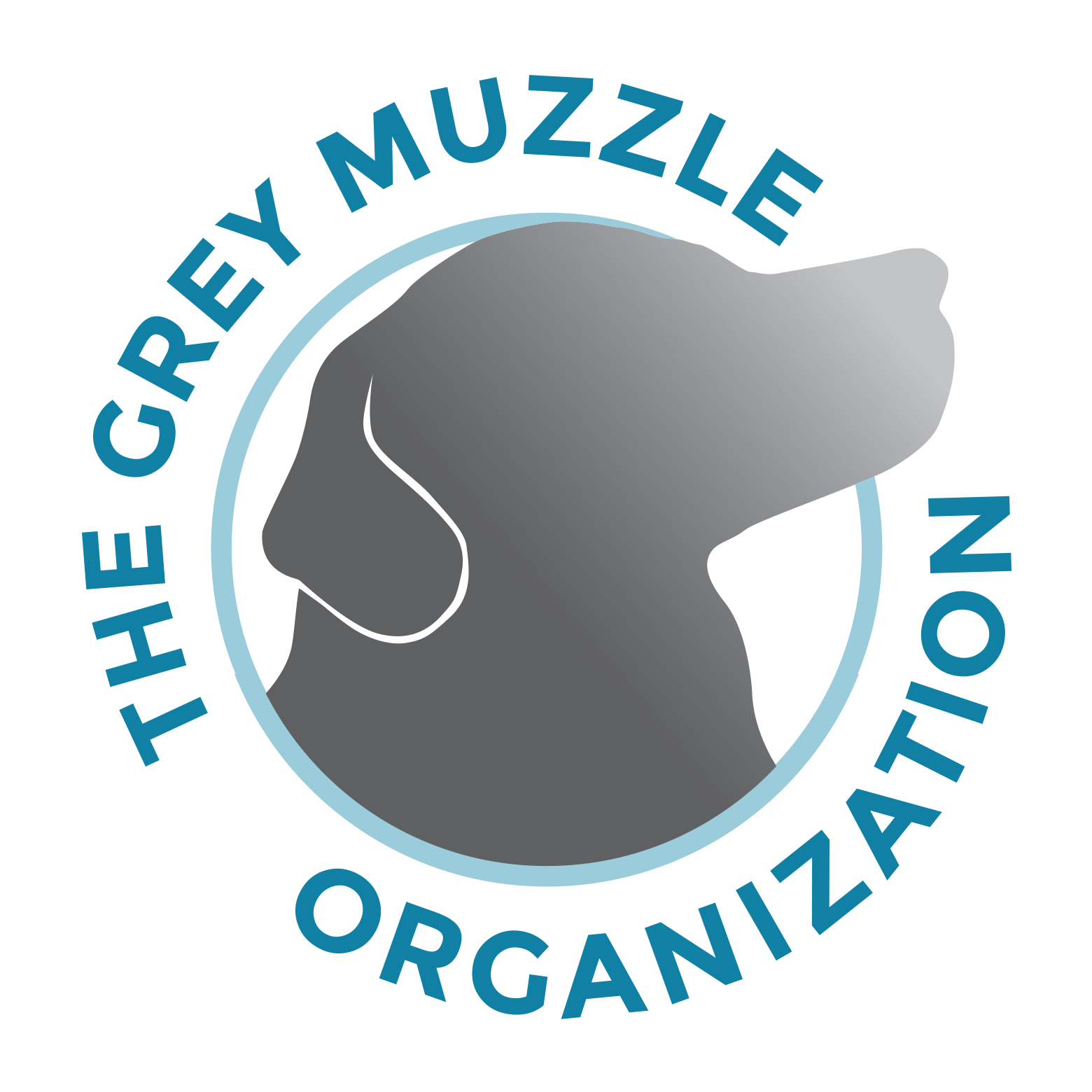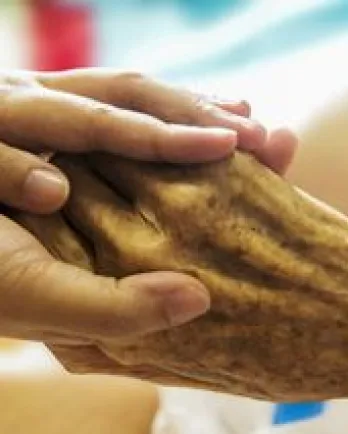Hospice: Not Just for Humans Anymore, a Changing Paradigm by Adam Clark
This article has been republished for exclusive use by The Grey Muzzle Organization with the permission of original author, Adam Clark, LSW, AASW
Hospice: Not Just for Humans Anymore, a Changing Paradigm
Note: If you’ve recently experienced the death of your pet, this article may be too triggering for you at this time. I’d suggest you start here for support.
According to the most recent NHPCO facts and figures, it is estimated that 1.6 to 1.7 million patients received services from hospice support programs across the United States in 2014 alone. Hospice services have been steadily growing in popularity since 1982 at an increasing rate.
Well, what is Hospice?
Hospice services provide an additional level of care to an individual who has been diagnosed by a primary physician with six months or less to live due to disease progression and/or diagnostic criteria.
Typically, for humans, a hospice care team is comprised in a holistic manner of Nursing support, Certified Nursing Assistance for daily hygiene needs, as well as Spiritual Care support and a Social Worker for the holistic psychosocial and emotional needs of the patient’s support system (or plausibly lack of support system). Additionally, many Hospice programs provide volunteers for companionship and specialized counselors that are trained in Bereavement for both anticipatory grief and after-death counseling, resources, and intervention.
Source: Pixabay/CC0 Public Domain
The focus or goal of bringing Hospice support services on-board is patient comfort, typically referred to as the Hospice Philosophy. Patients, and their families, are looking at non-aggressive or invasive procedures as they understand this is the final journey in their loved one’s life. They are choosing to avoid hospitalization at all costs, and the Hospice becomes the support in times of crisis or the “new 9-1-1 support to call.”
Hospice interventions include pain management and overall comfort care as the body begins to go through the process of dying. This natural process is extremely individualistic to the person. Overall, we say in Hospice that “we die the way we have lived.” At times, this process is quick and the family can struggle with how fast death occurred. Other times the patient is mentally prepared, willing, and ready to die but the body isn’t quite there yet.
(For more information on Human Hospice you can visit the National Hospice and Palliative Care Organization’s website, full of incredible resources and details.)
So, Hospice for Pets?
Similarly, Pet Hospice programs are steadily growing in popularity as the benefits of Human Hospice become increasingly well known, and people experience increasing comfort during their dying process. Just as an example for this article we’re going to highlight the volunteer supported Pet Hospice program by the Colorado State University Veterinary Teaching Hospital in Fort Collins, Colorado.
As a previous advisory member to their program, it was incredible to witness the immense benefit the Veterinary Students provided to individuals and families that wished to support their beloved pet through their own unique end-of-life journey. Under the CSVTH Pet Hospice Program, if a pet had been given a terminal diagnosis and they lived within 30 minutes of the Veterinary Hospice this program was given free of charge.
Veterinary students were provided highly specialized training in the area of end-of-life and transitions for pets. They collaborated with the primary care veterinarian and were able to visit the pet in the home and complete regular assessments, provide end-of-life education, and provide comfort care adjustments as the pet progressed within their unique end of life journey.
What services are typically provided by Pet Hospice?
Source: Pixabay/CC0 Public Domain
As of right now, there isn’t a database to easily discover which organizations might have a Pet Hospice Program available for you and your pet. With the growing trend and recognition that pet hospice could offer significant support to pets and their families, expect to see a lot of growth with the field in the near future.
Services may include:
- An assessment for your pain at each visit which records plausible pain levels, breathing, and heart rate
- Minor medical care and support for wounds such as bandage care and cleaning
- End-of-Life education to the entire family of the dying process and what they might expect
- Resources for body care after your pet's passing
Pet Hospice may or may not be integrated with home based Veterinary Services that include highly skilled euthanasia support and education
Growing trend for a Natural Death Process for Pets (versus Euthanasia)
Some pet owners are choosing to pursue a “Natural Death” process for their companion animal. In choosing this route for their companions life, it means that euthanasia will only be provided in cases of pain, discomfort, or if suffering is apparent in the end-of-life process.
Source: Pixabay/CC0 Public Domain
These owners experience the natural transition of their pet, although watching this can be difficult. There are similar signs and symptoms within this death process that compare to a human transition. Family members must educate themselves on these and be able to best support their pet through comfort measures. These measures are commonly supported through a holistic effort, such as acupuncture, or at times herbs and tinctures, as well as western medication for pain control, etc.
It is extremely important no matter what path a pet owner chooses for their pet that they continue to be supported by their Veterinarian’s guidance and expertise. Programs such as the International Association for Animal Hospice and Palliative Care are forming programs and education that assist both pet owners and Veterinarians better understand what this end of life process is for pets, and why it can be integral to your beloved companion animal. You can even search for a specific service provider, Veterinarians, that are trained in end-of-life support for your pet.
For more information, I highly encourage a visit to fellow Psychology Today blogger Jessica Pierce’s page. Jessica has made strides in helping readers look at the morality and ethical processes of death, dying, and end-of-life when it comes to our beloved companion animals.
You can find more of Adam Clark, LSW, AASW current projects at Love Loss Transition.
The information presented by The Grey Muzzle Organization is for informational purposes only. Readers are urged to consult with a licensed veterinarian for issues relating to their own pet's health or well-being or prior to implementing any treatment.
The Grey Muzzle Organization improves the lives of at-risk senior dogs by providing funding and resources to animal shelters, rescue organizations, sanctuaries, and other nonprofit groups nationwide.



